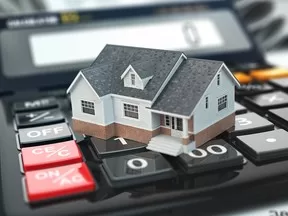Doing so would make homes more affordable and help solve Canada’s productivity problems
Article content
By Jerome Hass
Lawrence Solomon wrote on this page Tuesday that “the taxman is coming for our homes.” He argues that, since deciding not to tax capital gains on people’s principal residences in the early 1970s, governments have found many other ways to tax homes and are on the lookout for still more.
In my view, governments should tax housing more. Doing so will in the long run make housing more affordable and also help solve Canada’s productivity problems.
Advertisement 2
Article content
The crux of both these policy problems is that the overly favourable tax treatment of primary residences has distorted capital allocation in this country. A top priority for politicians should be to make the tax system more neutral across different kinds of investments. At the moment, it tilts heavily in favour of housing.
Almost nobody talks about productivity solutions these days, but every politician in the country promises to resolve the affordability crisis in the housing market. The solutions they propose are short-sighted, however. They invariably stoke demand by giving money to would-be homeowners. But that bids up the cost of housing even more.
We need instead to address both the demand and supply sides of the housing market. On the supply side, much can be done to make it easier for developers to get housing built. On the demand side, we need to stop subsidizing housing purchases so much. The lowest-hanging fruit is to wean Canadians off the major tax incentive — tax-free capital gains on primary residences — that drives them to acquire and retain more house than they need. If homes were taxed the same as other assets, Canadians would decide on their own, instead of the taxman deciding for them, how much of their wealth they wanted to hold in housing and how much in other forms. Unfortunately, the latest major tax change from Ottawa — increasing the inclusion rate for capital gains from one-half to two-thirds — widens the tax gulf between residential real estate and investments in businesses.
Article content
Advertisement 3
Article content
Consider a two per cent increase in the price of a $1,000,000 home with a 10 per cent down payment ($100,000). That $20,000 capital gain is tax-free if it’s a principal residence, which represents a 20 per cent return on the down payment. With a 67 per cent capital gains inclusion rate, however, an investor facing a marginal tax rate of 50 per cent would need a 30 per cent pre-tax return on a $100,000 non-residential investment to earn the same $20,000 after-tax profit.
Economically rational Canadians respond to this generous tax incentive by buying as much house as they can afford (thus increasing demand) and hanging on to it for as long as they can (decreasing supply) with less thought to their underlying shelter needs. Their allocation of investment to businesses is correspondingly suppressed, stifling investments in productivity-enhancing capital equipment.
To address this decades-old misallocation, we need to equalize the tax treatment of residential and non-residential investments. The current lifetime capital-gains exemption for proceeds from sales of small and medium-sized businesses is $500,000. This same exemption should apply to sales of residential housing. Beyond $500,000, however, two-thirds of any capital gain on the house should be taxable at whatever the owner’s marginal rate is.
Advertisement 4
Article content
In fairness to the very large number of Canadians who are counting on the equity value in their homes as a main source of retirement funding, existing gains should be grandfathered. The accumulated tax-free gain should be frozen at the current level. The CRA should allow a “deemed disposition” of homes. That is, the price should be set as of today, with any capital gains embodied in that price being tax-free. But future capital gains would be taxable, as for any other investment.
Just to be clear: if you bought your house for $600,000 and it’s currently worth $1 million, the $400,000 capital gain you’re sitting on won’t be taxed. But if you eventually sell for more than $1 million, any capital gain above $500,000 will be taxed — or at least two-thirds of it will be — at whatever your marginal rate is. If you sell for $1.75 million, say, you’ll pay on two-thirds of $250,000 (i.e., the $750K gain minus the $500K lifetime exemption).
Even with grandfathering, this policy proposal will be unpopular with homeowners (including many grandfathers!). And it will be hard for any political party to endorse it — which suggests it would have to be linked to sweeteners, such as reversal of the inclusion rate on capital gains back to 50 per cent. But it would immediately shift the demand for residential housing downwards, shift the supply curve upwards, lower equilibrium prices, and permanently improve housing affordability. The decline in housing prices almost certainly wouldn’t be catastrophic, so homeowners’ retirement nest-eggs would remain intact.
Advertisement 5
Article content
Recommended from Editorial
Moving closer to neutrality in the taxation of investment would remove a long-standing distortion favouring investment in housing over all other investments. It is the only policy prescription that can provide a permanent structural solution to Canada’s unique and crippling dysfunctions in both housing affordability and economic productivity.
And if in the end we decide to keep the status quo, at least we’ll know why we have these housing and productivity problems.
Jerome Hass, a portfolio manager at Lightwater Partners Ltd., was an economist with the Ontario Ministry of Finance.
Article content
